The fourth in a series of five lists counting down the 50 greatest movies set in the City of the Angels.
 20. American History X (1998)
20. American History X (1998)
To appreciate the brilliance of Edward Norton should require no more three films: Primal Fear (his screen debut), 25th Hour, and American History X. In the last, Norton is initially the hateful elder son of a murdered fireman who kills two black men in a fit of rage, and then eventually a recovering neo-Nazi who slowly starts to realize what hate is doing to him and his little brother. The onscreen transformation is amazing, but what makes the film so unforgettable is not so much Norton's character's evolution, as the actor's own towering presence. Just like Primal Fear works because the ego of its lead actor (Richard Gere) is so inexorably linked to the ego of the character he is playing (which, by the way, serves the basis for the film's stunning plot twist), American History X succeeds because the charisma of its central character and the charisma of the actor playing him seem to spring from the same deep, almost limitless pool.
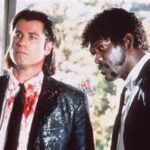 19. Pulp Fiction (1994)
19. Pulp Fiction (1994)
Certain movies get so lauded for being fresh and original they eventually stop measuring up to their critical acclaim. And while a case can be made that Pulp Fiction is not nearly the artistic achievement it was first thought to be in 1994, it's also possible that no movie since has had any greater impact on contemporary cinema. From his wildly imaginative use of time and place, and his steady barrage of esoteric pop culture references, to his wildly eclectic sound track, his simultaneously mundane and cosmic dialogue, and his quirky, even playful use of on-screen graphics, Quentin Tarantino literally tore the cover off the director's handbook with Pulp Fiction -- while at the same time reinventing the very definition of cool. What's more, the movie made stars of Ving Rhames and Uma Thurman, while miraculously resurrecting the careers of both Bruce Willis and John Travolta, two aging punchlines whose futures at that point looked as bleak as the remarkable string of bombs they'd manage to drop on the movie-going public: Bonfire of the Vanities, Death Becomes Her, North, Hudson Hawk, Color of Night, Staying Alive, Perfect, Look Who's Talking, Look Who's Talking Too and, of course, the utterly timeless Look Who's Talking Now.
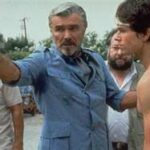 18. Boogie Nights (1997)
18. Boogie Nights (1997)
Just about any single performance in this disco-era period piece about the San Fernando Valley porn industry could have earned it something of a cult status. But to have all those performances together in one film almost feels like cheating. Mark Wahlberg's eager-to-please and ridiculously endowed busboy-turned-leading man, William H. Macy's sad sack of a director, Philip Seymour Hoffman's gay and goofy sound man, Burt Reynolds' charming but slimier-than-thou impresario and John C. Reilly's not-too-bright, porn-stud sidekick, to name just a few, were all Oscar-worthy. And that doesn't even take into account the achingly real performances of such gifted actors as Julianne Moore, Don Cheadle, Alfred Molina, Philip Baker Hall, Luis Guzman, and in particular, Robert Ridgely. But make no mistake, the real star of this oddly affecting film remains its writer and director, Paul Thomas Anderson, who at the time he made it was all of 25 years old.
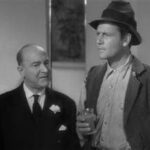 17. Sullivan's Travels (1941)
17. Sullivan's Travels (1941)
Of all the films on this list, this one might be the least known to contemporary audiences. It was not a huge hit in its day, nor is it widely cited as one of the true gems from the golden age of Hollywood. Yet that's exactly what it is. Sullivan's Travels is the story of a Hollywood director, made rich and famous by churning out light, fluffy comedies, who has a life-changing experience and suddenly decides to make a serious "message" picture. The film is noteworthy for three reasons. Its star, the incredibly underrated Joel McRea, gives a performance that is so effortless and true-to-life that it plays just as well today as it did 70 years ago. Its writer and director, Preston Sturges, just might have been the most fiercely independent and refreshingly original story-teller in Hollywood history. And finally, the "message" picture that the title character wants to make is a somber little rumination on the human condition he plans on calling O Brother, Where Art Thou?
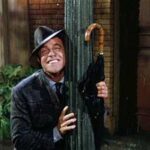 16. Singin' in the Rain (1952)
16. Singin' in the Rain (1952)
Another film that seems to achieve greater acclaim with every passing year. It's a musical in the sense that it takes momentary respites from its narrative to break into song (three of them showstoppers). But it's non-traditional in that most of its numbers were actually culled from other sources, and not written specifically for the film. What's so great about Singin' in the Rain, however, is not about music anyway. It's about narrative. A behind-the-camera story of Hollywood's sweeping and stunningly swift transformation from the silent film era to the age of talkies, a seismic shift which found many big stars ill-prepared to handle the new era's less-theatrical style of acting -- not to mention the physical demands of actually speaking their lines. Hollywood loves making movies about making movies, almost as much as it loves telling love stories. This is one of those films that gets to do both. What's more, the love at the center of the story is not so much between a man and a woman, as it is between an industry and itself.
 15. Bowfinger (1999)
15. Bowfinger (1999)
Like Singin' in the Rain, this one's a movie about the all-consuming passion that compels people to make movies. Only if Singin' in the Rain is, say, the Saving Private Ryan of movies about making movies, Bowfinger is the Stripes. Certain off-beat little films -- Lars and the Real Girl or Be Kind, Rewind immediately jump to mind -- have the ability take an absurd conceit and make it work because they're so unrelenting in their devotion to it. That's the secret to Bowfinger, the story of a fourth-rate writer/producer/director who convinces his cast and crew, against all logic and reason, that the biggest action star in the world has agreed to be in their cash-strapped, little independent film. He then stalks the star with his cast and crew in tow, stealing shots here and there as the man goes about his life. It is one of the smartest, most loving send ups of movie-making ever, and it works for two reasons: not only is Steve Martin a comedic writer whose combination of talent and imagination is on par with the Woody Allen of those fertile and wildly original Mighty Aphrodite and Bullets over Broadway years, but Eddie Murphy and Christine Baranski are so terrific they both should have been nominated for Oscars, if not actually won them.
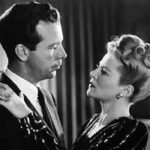 14. Murder My Sweet (1944)
14. Murder My Sweet (1944)
A landmark noir moment in cinematic history, Edward Dmytryk's Murder My Sweet is a little like The Maltese Falcon meets Citizen Kane. Stunning camera angles, dramatic use of light and shadows, and a story of alienation and betrayal that just won't quit. I've never been a huge Dick Powell fan, and he was an odd choice here, but his Marlow is a perfect balance of the hardened, bitter and world-weary gumshoe and the sadder and wiser, but still-vulnerable romantic. It's not the greatest noir mystery of all time, but it's close. And it's likely the Philip Marlowe story Raymond Chandler would have told had he trafficked, not in words and manly prose, but dimly lit moving images, full of darkness, danger and impending doom.
 13. Stand and Deliver (1988)
13. Stand and Deliver (1988)
One of the great mysteries of this film is how could a man write and direct such a compelling movie about, of all things, high school calculus, and then virtually disappear? Ramon Menendez' Stand and Deliver is, arguably, the finest movie ever made about what a difference a teacher can make in a bunch of kids' lives. Edward James Olmos gives the performance of his career as the late Jaime Escalante, who for years taught AP Calculus at Garfield High in the East L.A. barrio, and whose success became so legendary that at one point President Ronald Reagan actually flew to L.A. to meet him and watch him teach. While the film is a largely condensed version of Escalante's efforts to build his calculus program, what cannot be disputed is its final scene, over which a series of facts scroll down the page, each of them hitting you like a sledgehammer until you look around and realize your wall of cynicism has been reduced to a pile of rubble.
 12. The Graduate (1967)
12. The Graduate (1967)
Call this an honorary placement. I don't necessarily believe The Graduate is the 12th best film on this list. But it just so happens that on the night it was released theatrically I was celebrating my 13th birthday; my very first day as a teenager. So, while I know a great deal about The Graduate's impact on future filmmakers through what I've read, seen and heard from others, I also saw that influence play out in real time. And much like Pulp Fiction, I contend it is virtually impossible to overrate how much Mike Nichols' film has influenced future generations of American directors. In fact, to watch The Graduate today is a little like auditing a Berlitz course on the language of filmmaking. For to experience how those classic Simon and Gurfunkel songs help move the story forward, to see Benjamin Braddock both framed and dwarfed by Mrs. Robinson's leg, to hear that unforgettable and ironic single-word line, "Plastics," and to behold Ben and Elaine's uneasy sense of the future as they sit in the back of the bus during the film's brilliantly understated final scene, today feels less like watching a movie than it does strolling through a museum of cinematic touchstones.
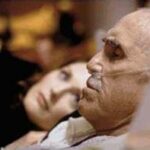 11. Magnolia (1999)
11. Magnolia (1999)
I will grant you, a lot of people would rather watch paint dry than sit through Magnolia. But on the same token, some people find things like fly fishing, baseball and chess boring, while others consider them the purest form of religion on earth. For me, Magnolia's got a whole lot of that religion-on-earth thing going for it, and is a film that, once you've checked your logic and reason at the door and bought into its fun-house mirror sense of reality, can move you in ways you might not be able to fully express. As he did in Boogie Nights, writer and director Paul Thomas Anderson gets stunning performances out of his cast, in particular Philip Seymour Hoffman, Tom Cruise, Julianne Moore and William H. Macy. And his use of a handful of Aimee Mann songs is, arguably, the most imaginative marriage of pop music and film this side of Moulin Rouge. But all this amazing movie really needs in the way of validation is what Hoffman once said about it: "I think Magnolia is one of the best films I've ever seen, and I can say that straight out. And anybody that disagrees with me, I'll fight you to the death."
